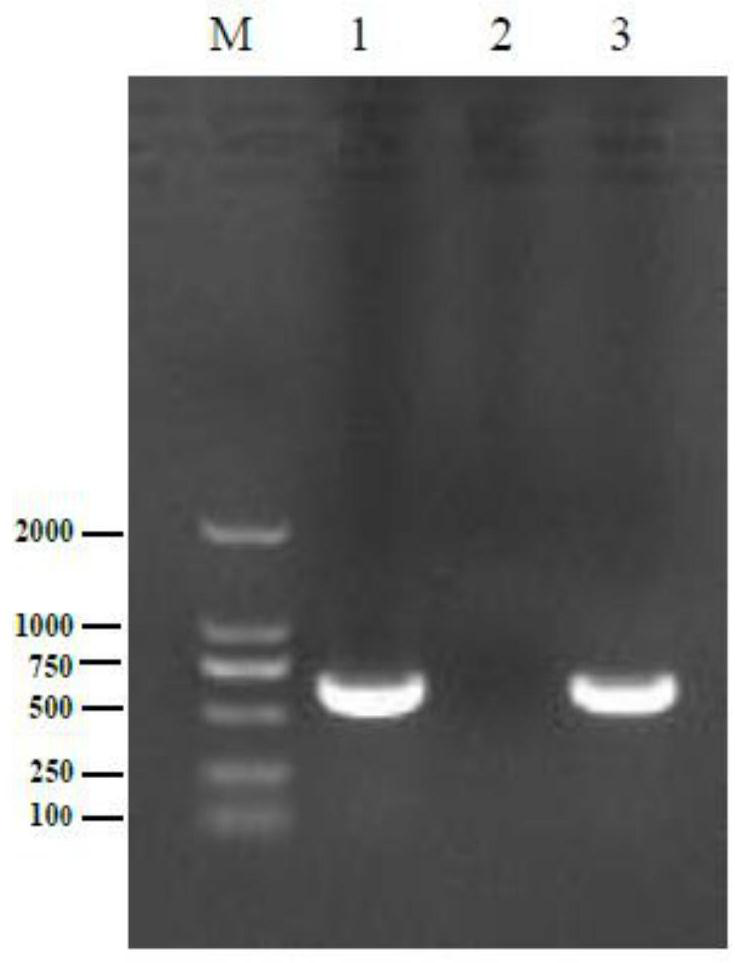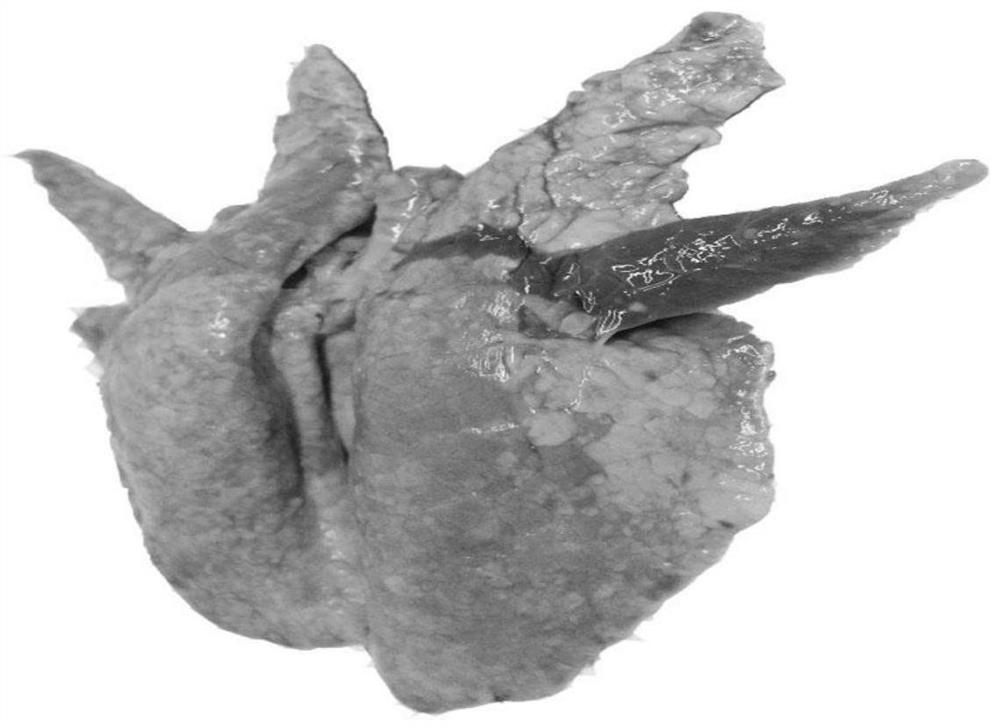A kind of mycoplasma hyopneumoniae and its application in the preparation of inactivated vaccine
A technology for mycoplasma hyopneumoniae and inactivated vaccines, which is applied in the field of mycoplasma hyopneumoniae and its application in the preparation of inactivated vaccines, and can solve the problems of limited strains, complicated isolation procedures of mycoplasma hyopneumoniae, and high nutritional requirements of mycoplasma hyopneumoniae
- Summary
- Abstract
- Description
- Claims
- Application Information
AI Technical Summary
Problems solved by technology
Method used
Image
Examples
Embodiment 1
[0019] The mycoplasma hyopneumoniae of the present invention is isolated from the lung of an Enshi native pig with emaciated body and obvious coughing and panting. The isolation process is as follows: 1) select a long-term fattening pig with an emaciated body and long-term coughing and panting; 2) after on-site dissection, immediately dissect The lungs were taken out and stored in dry ice for long-distance transportation; 3) Take the diseased material out of the dry ice and thaw it in an ultra-clean table; 4) Take a sample of the intersection of the typical shrimp-like meat change and normal lung tissue in the lung, and put it in a dry place. EP tube, and add 1 mL of sterilized PBS, and grind in a grinder; 5) Grind at 60 Hz for 300 seconds, then centrifuge at 5000 rpm / min in a centrifuge at 4°C for 5 min; 6) Use a 0.45 μm filter to remove the centrifuge After the bacteria in the tissue supernatant, put the filtered supernatant in a sterile test tube, then add four times the vol...
Embodiment 2
[0032] The current method for determining the growth titer of Mycoplasma hyopneumoniae is mainly the color change unit (Colour Change Unit, CCU) titer test. Because Mycoplasma hyopneumoniae can metabolize glucose to produce acid, using phenol red as an indicator to change the pH value of the liquid medium can be applied to indirect determination of the number of Mycoplasma hyopneumoniae in the culture. Inoculate the frozen Mycoplasma hyopneumoniae ES-2 strain into Friris medium, in 5% CO 2 37°C in an incubator for 3 days; after recovery, transfer to Friris medium at a ratio of 1:10 (volume ratio), 5% CO 2 , After culturing at 37°C for 48 hours, measure the titer of Mycoplasma hyopneumoniae ES-2 strain according to the color change unit titer experiment. After preparation, add 0.4% phenol red (1.15mL) filtered through a 0.22μm filter) and divide into 25mL gas-tight cell culture flasks, add 0.5mL of bacterial solution to the first 25mL gas-tight cell culture flask, mix well and...
Embodiment 3
[0037] Mycoplasma hyopneumoniae is one of the main pathogens causing porcine epidemic pneumonia. The pathogen has a low lethality rate but a high morbidity rate. Once infected, it is difficult to eradicate the disease. In 1996, Friis published the paper "Swine mycoplasmoses" in the journal "Rev.sci.tech.Off.int.Epiz." It reported that the strong pathogenic Mycoplasma hyopneumoniae caused lung bronchial inflammation, and the lesions usually appeared in the Lesions can also occur in the apex lobe, heart lobe, and accessory lobe, and the upper edge of the lobe of the lung, and the typical lesion is "meat degeneration". Attenuated Mycoplasma hyopneumoniae does not cause lung lesions. The mycoplasma hyopneumoniae ES-2 strain of the present invention can cause the typical shrimp-like meat change of heart lobe of pig lung ( image 3 ), indicating that the Mycoplasma hyopneumoniae ES-2 strain is a virulent strain.
PUM
 Login to View More
Login to View More Abstract
Description
Claims
Application Information
 Login to View More
Login to View More - R&D
- Intellectual Property
- Life Sciences
- Materials
- Tech Scout
- Unparalleled Data Quality
- Higher Quality Content
- 60% Fewer Hallucinations
Browse by: Latest US Patents, China's latest patents, Technical Efficacy Thesaurus, Application Domain, Technology Topic, Popular Technical Reports.
© 2025 PatSnap. All rights reserved.Legal|Privacy policy|Modern Slavery Act Transparency Statement|Sitemap|About US| Contact US: help@patsnap.com



